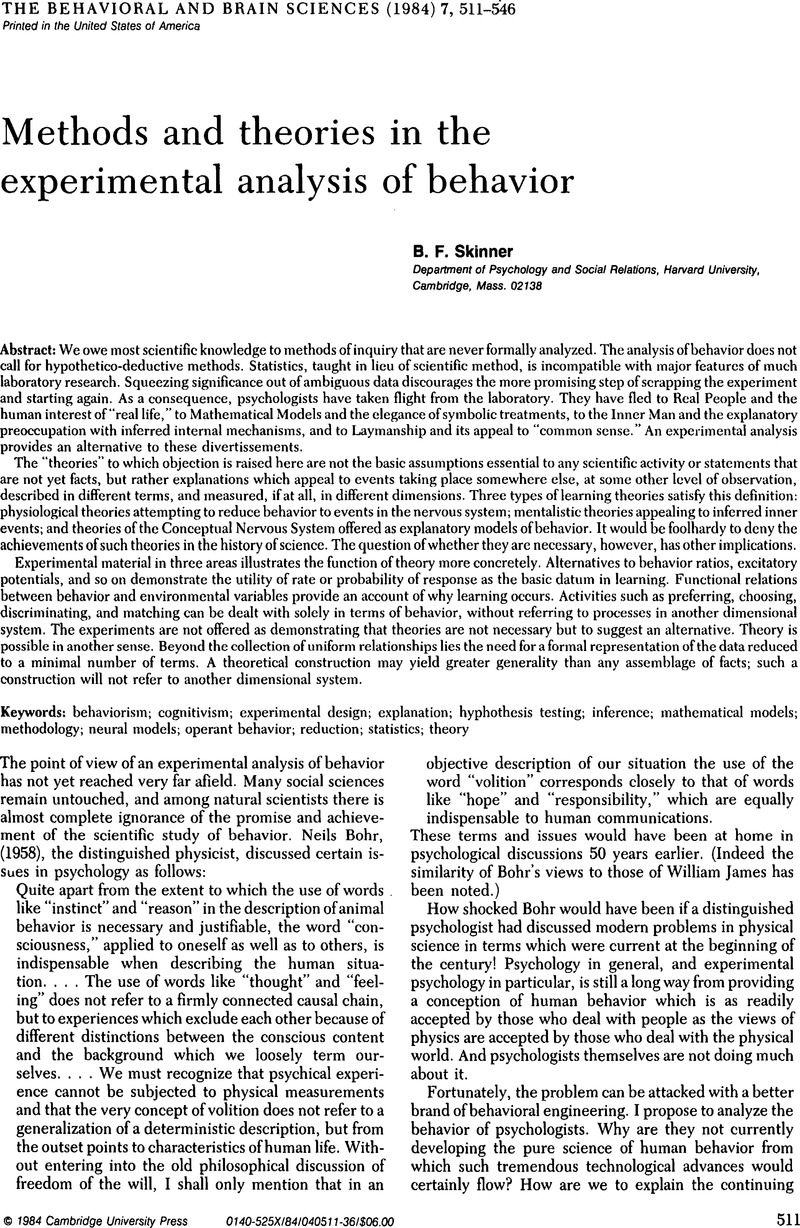Baer, D. M. (
1982)
Some recommendations for a modest reduction in the rate of current recommendations for an immodest increase in the rate of exclusive usages of rate as a dependent measure. Paper presented at the meeting of the Association for Behavior Analysis,
Milwaukee. [SMD]
Google Scholar 